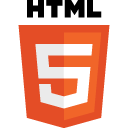News
HTML 5.2 is now a W3C Recommendation
14 December 2017 | Archive
 The Web Platform Working Group has published a W3C Recommendation of the HTML 5.2 specification that would obsolete the HTML 5.1 Recommendation.
The Web Platform Working Group has published a W3C Recommendation of the HTML 5.2 specification that would obsolete the HTML 5.1 Recommendation.
The HTML 5.2 specification defines the 5th major version, second minor revision of the core language of the World Wide Web: the Hypertext Markup Language (HTML). In this version, new features continue to be introduced to help Web application authors, new elements continue to be introduced based on research into prevailing authoring practices, and special attention continues to be given to defining clear conformance criteria for user agents in an effort to improve interoperability.
The group also published a First Public Working Draft of HTML 5.3, which defines the 5th major version, third minor revision of the core language of the World Wide Web: the Hypertext Markup Language (HTML).
WAI-ARIA 1.1, Core-AAM 1.1, DPub-ARIA 1.0, and DPub-AAM 1.0 are W3C Recommendations
14 December 2017 | Archive
The Accessible Rich Internet Applications (ARIA)Working Group has published Accessible Rich Internet Applications (WAI-ARIA) 1.1, Core Accessibility API Mappings 1.1, Digital Publishing WAI-ARIA Module 1.0, and Digital Publishing Accessibility API Mappings 1.0 as W3C Recommendations. WAI-ARIA provides an ontology of roles, states, and properties that define accessible user interface elements and can be used to improve the accessibility and interoperability of web content and applications. These semantics are designed to allow an author to properly convey user interface behaviors and structural information to assistive technologies in document-level markup. DPub-ARIA extends WAI-ARIA with roles specific to helping users of assistive technologies navigate through long-form documents used in digital publishing. DPub-AAM describes how these roles map to features of platform accessibility APIs. WAI-ARIA 1.1 is supported by WAI-ARIA Authoring Practices 1.1 which has been published as a Working Group Note. More information about these publications is available in the WAI-ARIA 1.1 is Recommendation email and the WAI-ARIA 1.1 Authoring Practices Note blog post. Read about the Web Accessibility Initiative (WAI).
Call for Review: CSS Basic User Interface Module Level 3 (CSS3 UI) is a W3C Proposed Recommendation
14 December 2017 | Archive
The CSS Working Group has published a Proposed Recommendation of CSS Basic User Interface Module Level 3 (CSS3 UI). This specification describes user interface related properties and values that are proposed for CSS level 3 to style HTML and XML (including XHTML). It includes and extends user interface related features from the properties and values of CSS level 2 revision 1. It uses various properties and values to style basic user interface elements in a document.
CSS is a language for describing the rendering of structured documents (such as HTML and XML) on screen, on paper, in speech, etc. Comments are welcome through 1 February 2018.
W3C Invites Implementations of Wake Lock API
14 December 2017 | Archive
The Device and Sensors Working Group invites implementations of the Wake Lock API Candidate Recommendation. This document specifies an API that allows web applications to request a wake lock. A wake lock prevents some aspect of the device from entering a power-saving state (e.g., preventing the system from turning off the screen).
Update to Three Candidate Recommendations of CSS Working Group
14 December 2017 | Archive
The CSS Working Group invites implementations of three updated Candidates Recommendations:
CSS Counter Styles Level 3: This module introduces the ‘@counter-style’ rule, which allows authors to define their own custom counter styles for use with CSS list-marker and generated-content counters [CSS-LISTS-3]. It also predefines a set of common counter styles, including the ones present in CSS2 and CSS2.1.
CSS Grid Layout Module Level 1: This CSS module defines a two-dimensional grid-based layout system, optimized for user interface design. In the grid layout model, the children of a grid container can be positioned into arbitrary slots in a predefined flexible or fixed-size layout grid.
CSS Scroll Snap Module Level 1: This module contains features to control panning and scrolling behavior with “snap positions”.
CSS is a language for describing the rendering of structured documents (such as HTML and XML) on screen, on paper, in speech, etc.
WoT Security and Privacy Considerations Note Published
14 December 2017 | Archive
The Web of Things (WoT) Working Group has published the first draft of its Group Note of Web of Things (WoT) Security and Privacy Considerations. This document provides non-normative guidance on Web of Things (WoT) security and privacy. The Web of Things is descriptive, not prescriptive, and so is generally designed to support the security models and mechanisms of the systems it describes, not introduce new ones.
First Public Working Draft: Payment Method Manifest
12 December 2017 | Archive
The Web Payments Working Group has published a First Public Working Draft of Payment Method Manifest. This specification is designed to increase the security of payment applications. It defines the machine-readable manifest file, known as a payment method manifest, that describes how a payment method participates in the Web Payments ecosystem.
